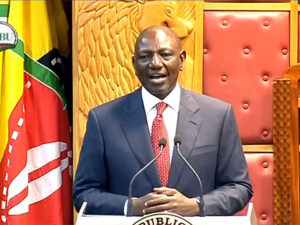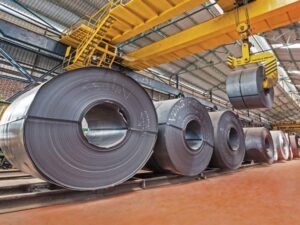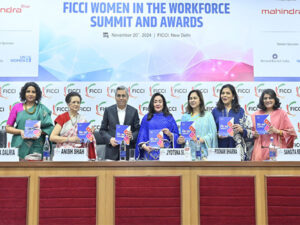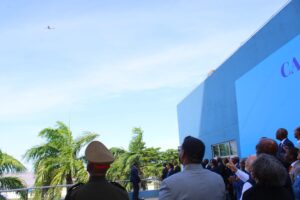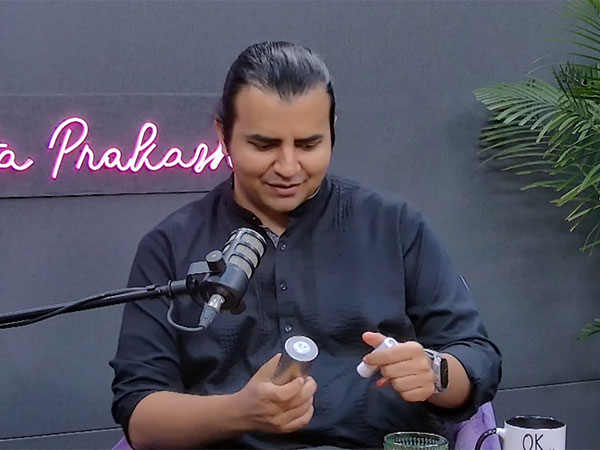
New Delhi [India], July 7 (ANI): Ola-founder Bhavish Aggarwal said that the company has developed a cutting-edge lithium cell battery named “Bharat cell”, which is currently undergoing trials in an advanced stage and can be a gamechanger for the Indian electric mobility ecosystem once it is launched on a full scale.
“This is the 5G of lithium cells, if I can say, it in a very simple way. This is the cutting-edge technology that we have made in India. Globally, only a few companies have this technology capability,” Bhavish Aggarwal told ANI in a podcast session.
And for this technology, Ola’s founder apprised that it had not done any partnership for its development.
The Bharat Cell reportedly received certification from the Bureau of Indian Standards, which is a mandatory requirement before commercial production starts at its Ola Gigafactory.
India, which largely imports lithium cell batteries, does not make any as of now. Batteries make up a significant part of the cost of manufacturing a unit electric vehicle.
Aggarwal said his electric mobility company Ola Electric‘s mission statement is to make India the global EV hub.
“…to make India use EVs, we’ll have to build the products India wants, two-wheelers, three-wheelers, other products, which is more India-centric. And by extension, Global South will use those products. But not limit ourselves to the product. In the end, what will define success in Ola Electric is whether, and the whole EV game is, whether we can build a lithium technology in India. So we’ve backward integrated into lithium technology,” Aggarwal said, as he showcased the Bharat Cell during the podcast to the viewers.
Currently, the 2170 battery is dominating the market and it is expected that 4680 will soon replace it, particularly because of its added advantages – more energy capacity, fast charging abilities, and low cost (both manufacturing and retail).
“Bharat Cell” will find its use case in vehicles, for energy storage at home, besides going into grid energy storage.
“This (Bharat Cell) is five times more energy than this. And since one unit has five times the energy, the cost is lower. This has better fast charging capability. Charging speed is important in EVs,” Aggarwal asserted, holding one such battery on his hands.
“It has less cobalt, so the cost is lower. Energy density is a very important paradigm in cells. Its energy density is 250 Watt hour per kg. This has 275 Watt hour per kg. So that means more energy in the same weight. Cost comes down, performance goes up,” he further explained the advantages.
The Bharat Cell will be produced in its 1500-2000 acre size EV hub in Tamil Nadu.
Further, when asked what is the important component of the Bharat cell battery, he explained it is cathode-anode technology.
“So, in this, we make the cathode anode ourselves. But not the material which goes into making the cathode anode. The material comes from outside. Some from Japan, some from Korea, some from China, some from Europe.
“(The material that is imported) is called a cathode active material, anode active material, which itself is a combination of like nickel, cobalt, manganese or anode is graphite. So electrolyte will have different salts. Now India has a very good pharma ecosystem, a pharmaceutical ecosystem, which will be a very good enabler for things like electrolytes. So India’s traditional chemical industry, that will actually benefit from cell manufacturing in India. So we are looking to work with the Indian ecosystem to localize the supply chain also one by one,” Aggarwal outlined.
China is a leader in manufacturing this key material, and Aggarwal believes India will be able to localise it in the next four to five years.
“We’ve made the anode-cathode, but the anode-cathode material still comes from outside. That also is the midstream where China leads today. So we will have a three, four, five-year journey to localize it step by step,” the Ola founder added.
In January 2011, he co-founded Ola Cabs with Ankit Bhati in Bengaluru. Aggarwal was included in Time magazine’s 100 Most Influential People of 2018.
Aggarwal received his Bachelor’s Degree in Computer Science and Engineering from IIT Bombay, in 2008. (ANI)
Ola founder Bhavish Aggarwal draws parallel between its upcoming IPO and that of Maruti’s 20 years ago
New Delhi [India], July 7 (ANI): Bhavish Aggarwal, the Chief Executive Officer of Ola, drew a parallel between Ola‘s journey and that of Maruti Suzuki, ahead of his electric mobility company Ola Electric’s much-awaited IPO.
In a podcast with ANI, Aggarwal said, “20 years ago, the Maruti IPO came and public markets remember that after the Maruti IPO, there has been a certain growth. And, so we wanted to bring that for public investors to be part of our story if they wish to.”
This comparison underscores Aggarwal’s vision for Ola‘s IPO to serve as a transformative event for the company and its potential investors, reminiscent of Maruti Suzuki’s impactful public market debut.
Delving into the upcoming initial public offering (IPO) of Ola, Aggarwal said that the company had submitted the final observations for its IPO.
Ola Electric initiated the process towards becoming a publicly traded entity by filing its Draft Red Herring Prospectus (DRHP) with SEBI in December 2023. SEBI granted its approval for Ola Electric’s IPO in June 2024. According to SEBI’s website, the approval includes the issue of shares amounting to Rs 5,500 crore and a follow-on-offer (OFS) worth Rs 1,750 crore, bringing the total IPO size to Rs 7,250 crore.
The observation letter, indicating SEBI’s clearance, was issued on June 10, 2024, and the formal approval followed on June 20, 2024. The IPO includes a primary issue of Rs 5,500 crore, which involves the issuance of new shares to raise capital for the company.
He replied to SEBI queries and expects final approval from the regulator and IPO to be completed this year, stating, “We filed the final observations. There’s still a bunch of process steps to go through over the next few weeks. And as we go through them, we are keen to get onto the markets, as soon as we get them, but you won’t give a date from data because there’s a SEBI process that you have to follow.”
The company’s public offering is expected to be one of the most significant in the Indian market, reflecting the growing importance of technology-driven enterprises in the country’s economic landscape. (ANI)







